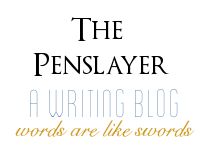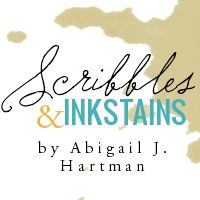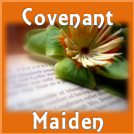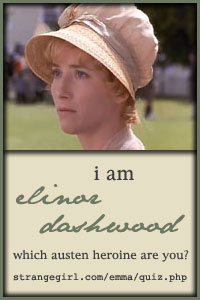Even though I'm very busy these days (hence my long absences from blogger-sphere), I just had to share something in recognition of this very special day here in Australia. In fact, I would most probably find it extremely difficult to forgive myself if I let that day pass without posting something!
 |
| via Pinterest |
 |
| Image: H02316 _"Anzac Beach, Gallipoli. 1915. Looking north along Anzac Cove after Anzac Corps had landed and members were settling in on the slopes of the hills." via the Australian War Memorial |
 |
| ANZAC troops on Gallipoli peninsula via The Australian |
| Anzac Nurses |
 |
| Anzac Girls (2014) an ABC TV mini-series A moving portrayal of Anzac nurses during the Great War based on the book with the same name by Peter Rees. Highly Recommended Reading and Watching! |
 |
| Australian Nurse, Matron Grace Wilson, on Lemnos Island near Gallipoli From Anzac Girls (2014) |
 |
| Sister Alice Ross King, Anzac Girls (2014) |
 |
| Sister Olive Haynes (left), on Lemnos Island (close to Gallipoli). [Sister Olive Haynes is one of my favourite characters in Anzac Girls (2014) |
__________________________________
There are indeed many things we can take from this time of commemoration. As a historian (in the making), it's so easy for me to get bogged down in the debates. It's so easy to fall into cynicism. Some argue the worth and relevance of ANZAC Day or the presence of the ANZAC Legend in our society since it's very selective, fails to tell the whole historical truth and that it glosses over the darker side of the experiences of the soldiers and of what really happens in war. In many ways this is true. However, while it is important to be truthful in our study and analysis of the past (without which we can never really know the truth and learn from its mistakes or really appreciate its full significance), we must not forget that legends are still built on historical realities and truths. It helps us articulate complex truths and realities and make them more tangible for ourselves. Making legend out of history helps to remind us of many of the great virtues exhibited by many (if not most) of the Anzacs - courage, heroism, loyalty, duty, and honour. That doesn't mean they showed these ideal qualities at all times. They were ordinary men and women with a fallen nature like us. However, they did aim for those ideals and many times embodied them at various times despite all odds. That's the point. Legends, therefore, put a standard or ideal for us to aim at. We all still yearn to have these ideals before us, despite all the scepticism and hostility of postmodernists and moral relativists in the media and academia today. Legends help us to better ourselves and our society. It creates a goal. I believe that is why the ANZAC Legend has endured and will endure. The ANZAC Legend also embodies that heroic ideal of sacrificial love. Christ has shown us the true meaning of this. "Greater love hath no man than this, that a man lay down his life for his friends," (John 15:13). There is something within us that yearns for this love. Having the ANZAC Legend, I believe, gives a cryptic image of this love to our society that yearns for this love but has lost it and can only really find its true meaning in rediscovering Christ's love and sacrifice. Australian Defence Chaplain, Geoff Webb puts really beautifully: From a Christian perspective ANZAC Day is a phenomenon that we have to deal with and understand if we are to reach the Australian heart. I suppose it is almost trite to point out that the spirituality of ANZAC Day echoes the themes of the Gospel. Sacrifice, mateship, patience and courage are at the centre of Jesus’ ministry. It is interesting that ANZAC and Easter usually are very close to each other. 2013 is about as far apart as they get.It seems to me that God has placed at the centre of Australian national consciousness a reminder of that ultimate and divine sacrifice that brings not political freedom but eternal freedom, not just life for a nation but eternal life for all. When at the end of every dawn service the bugler plays Rouse or Reveille they are proclaiming confidence in a resurrection that only one sacrifice has made possible. So don’t condemn ANZAC Day but look for the links to and the longing for life and hope that only the sacrifice of Jesus Christ has made possible.- See more at: http://www.defenceanglicans.org.au/the-spirit-of-anzac/#sthash.Fy9KbyqS.dpuf
____________________________________
I was very privileged to get the opportunity to visit Canberra last month and I got to visit the Australian War Memorial for the very first time. I was so glad to attend the ceremony of the 'Last Post'. It was such a moving experience.  |
| Panoramic view of the Federal Parliament of Australia, Canberra from the Australian War Memorial. Photo curtesy of my sister Joy C. from Fullness of Joy Blog |
 |
| The Australian War Memorial. via Wikipedia |
 |
| Poppies on the Roll of Honour in the Australian War Memorial. Photo courtesy of my sister Joy C. from Fullness of Joy blog. |
 |
| Lest We Forget Memorial. Australian War Memorial Photo Courtesy of my sister Joy C. from Fullness of Joy Blog. |
 |
| Statue of Simpson and his Donkey. Australian War Memorial. This is a very iconic image of the Anzac Legend. Photo Courtesy of my sister Joy C. of Fullness of Joy Blog |
_____________________________________
Yesterday, I took time to make some ANZAC biscuits with my youngest sister, Gracie! We just had a lot of fun making them and they're just so yummy! ANZAC Biscuits are one of the important traditions of ANZAC Day. Here is the recipe I use (there are a number of variations to this recipe and a bit of contention whether they should be served hard or soft! - I prefer them a bit crunchy, but not too hard):
3/4 cup/ 170 g/ 5 1/2 oz. caster sugar
1 cup. 125 g/ 4 oz. flour, sifted
1 cup/ 90 g/ 3 oz. instant rolled oats
90 g/ 3 oz. butter
1/4 cup/ 60 ml/ 2 fl oz. water
1 tablespoon golden syrup (I used rice syrup)
1/2 teaspoon bicarbonate of soda
1. Place sugar, flour, oats and coconut in a bowl and mix to combine.
2. Melt butter in a saucepan over a medium heat. Remove pan from heat and stir in water, golden syrup and bicarbonate of soda. Pour into dry ingredients and mix to combine.
3. Place heaped teaspoons of mixture on greased baking trays and bake for 15-20 minutes. Oven Temperature 160*C/ 325*F / Gas 3.
4. Stand biscuits on trays for 3 minutes before transferring to wire racks to cool.
Makes about 30.
**Recipe from Carolyn Fienberg and Anna Philips, The Collector's Collection: Recipes From a Country Kitchen, Australia: J.B. Fairfax Press Pty Limited, 1998, p. 16**
_____________________________________
**Recipe from Carolyn Fienberg and Anna Philips, The Collector's Collection: Recipes From a Country Kitchen, Australia: J.B. Fairfax Press Pty Limited, 1998, p. 16**
_____________________________________
I'd like to close with the words of the Ode from Blinyon's poem, For the Fallen: (Listen to the sound of the 'Last Post' here)
Age shall not weary them, nor the years condemn.
At the going down of the sun and in the morning
We shall remember them.
LEST WE FORGET
The Silence.


























